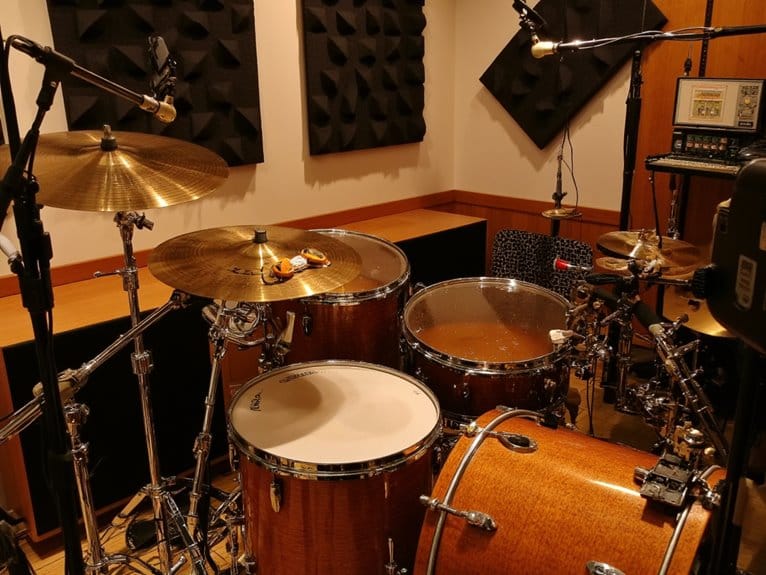Is Flute Good Exercise for Lungs?
Playing the flute is a highly effective way to improve lung function and increase respiratory health. By engaging the diaphragm and practicing controlled breathing techniques, flutists strengthen their respiratory muscles, leading to improved lung function and increased oxygen capacity. Regular practice can even lead to increased lung elasticity and oxygenation of the body. As the flute requires precise breath control and diaphragmatic movement to produce a rich, resonant sound, it provides a targeted workout for the lungs. By exploring the nuances of flute playing, you'll uncover the full range of benefits it offers for respiratory health.
We are supported by our audience. When you purchase through links on our site, we may earn an affiliate commission, at no extra cost for you. Learn more.
Breathing Techniques in Flute Playing
Proper breathing techniques are essential in flute playing, as they enable flutists to produce a rich, resonant sound and maintain control over their instrument, thereby improving overall lung function. Effective breathing involves engaging the diaphragm, allowing the lungs to fill with air efficiently. This is achieved by relaxing the shoulders, chest, and abdominal muscles, enabling the diaphragm to descend and create a vacuum in the lungs. As a result, the lungs fill with air, and the flutist can produce a consistent, controlled tone. By adopting proper breathing techniques, flutists can optimize their lung function, leading to improved respiratory health and elevated musical performance.
Lung Capacity and Airflow Dynamics
As flutists rely on the precise regulation of airflow to produce a rich, resonant sound, understanding lung capacity and airflow dynamics is crucial for ideal flute performance. Lung capacity refers to the total volume of air that can be held in the lungs, which directly affects the duration and quality of a flutist's tone. Airflow dynamics involve the rate at which air moves through the instrument, influencing pitch, tone color, and articulation. Effective flute playing requires a balance between lung capacity and airflow dynamics, enabling flutists to control airflow to achieve desired musical effects. By developing lung capacity and airflow dynamics, flutists can improve their overall technique, leading to refined musical expression and communication.
Oxygen Intake and Carbon Dioxide
During flute playing, oxygen intake and carbon dioxide exchange play a critical role in maintaining ideal respiratory function, as the body's demand for oxygen increases to support the physical demands of playing the instrument. As the player inhales, oxygen is drawn into the lungs, and simultaneously, carbon dioxide is expelled. This exchange is vital, as it allows the body to generate energy and eliminate waste products. As the flute player breathes in, oxygen-rich air fills the lungs, and the diaphragm descends, increasing lung volume. Concurrently, carbon dioxide is released from the bloodstream into the lungs, where it is exhaled out of the body. This efficient oxygen-carbon dioxide exchange enables the player to sustain long periods of playing.
Diaphragmatic Movement and Control
Flute playing requires precise control over diaphragmatic movement, which is critical for maintaining the ideal airflow and pressure necessary to produce a rich, resonant sound. As the diaphragm descends, it increases lung volume, allowing for more air to enter the lungs. The diaphragm's movement also influences the airflow's velocity and pressure, affecting the tone quality. Flute players must develop conscious control over their diaphragmatic movement to adjust airflow, pitch, and volume. This control is achieved through proper breathing techniques, posture, and embouchure. By mastering diaphragmatic movement, flute players can produce a wide range of tonal colors and dynamics, making it an essential aspect of flute technique.
Respiratory Benefits of Flute Practice
Practicing flute regularly strengthens the respiratory muscles, leading to improved lung function and increased oxygen capacity. This is because flute playing requires controlled breathing, engaging the diaphragm and intercostal muscles to produce a consistent airflow. As a result, the lungs become more efficient at exchanging oxygen and carbon dioxide, leading to improved respiratory health. Flute practice also increases lung elasticity, allowing for more air to be inhaled and exhaled. In addition, the increased oxygenation of the body can lead to improved overall health, including increased energy levels and augmented physical performance. Regular flute practice can consequently be a valuable addition to an exhaustive respiratory exercise routine.
Comparing Flute to Other Exercises
While other exercises, such as running or swimming, provide an intense cardiovascular workout, they often neglect to specifically target the respiratory system, making flute practice a unique and valuable addition to a well-rounded exercise routine.
Here are some key benefits of flute practice compared to other exercises:
- Improved lung capacity: Flute practice strengthens the diaphragm and increases lung capacity, allowing for more efficient oxygen intake.
- Targeted respiratory workout: Flute playing directly engages the respiratory system, providing a focused workout for the lungs.
- Low-impact: Flute practice is a low-impact activity, making it accessible to individuals with mobility limitations.
- Portability: The flute is a portable instrument, allowing for practice anywhere, anytime.
- Mental benefits: Flute playing has been shown to reduce stress and anxiety, promoting overall well-being.






